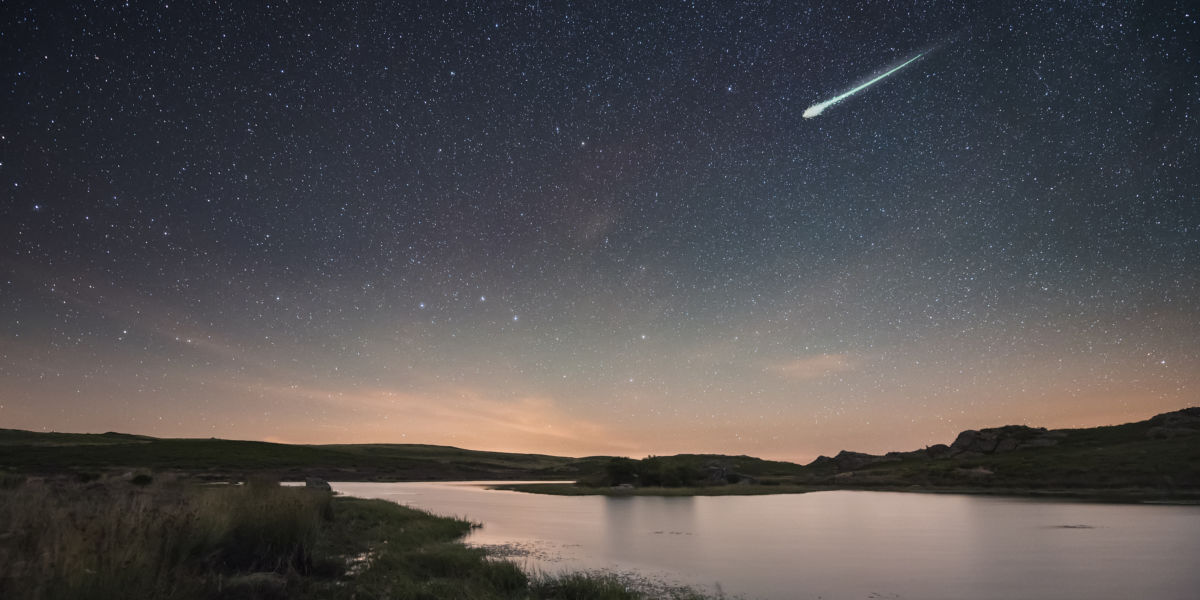
Don’t Miss the Year’s Most Dramatic Meteor Shower
The possibility of seeing a rare fireball enter the atmosphere is a good reason to stay up late this week.

One night a few years ago, I was taking out the garbage when a light in the sky caught my eye. It was like a Roman candle, but strangely silent, and headed toward the Earth, not up. It was visible for several seconds, and then it winked out without making a sound. Unsettled, I headed back toward the house. Before I was inside, I felt a vibration through the soles of my shoes, and heard a low rumble. “First strange flares,” I thought, “And now we’re having an earthquake, too?”
An anxious hour or so later, news reports starting clearing up the mystery. What I and much of the Bay Area had seen (and felt) was an extra-large meteor—perhaps the size of a car—getting closer to the surface of the Earth than most meteors do. The rumble was a sonic boom made by the big rock hurtling through the air at about 1,000 mph before disintegrating harmlessly. (The vibration I felt was caused by the sonic boom, too—this particular meteor, like most, burned up before it hit the ground.)
